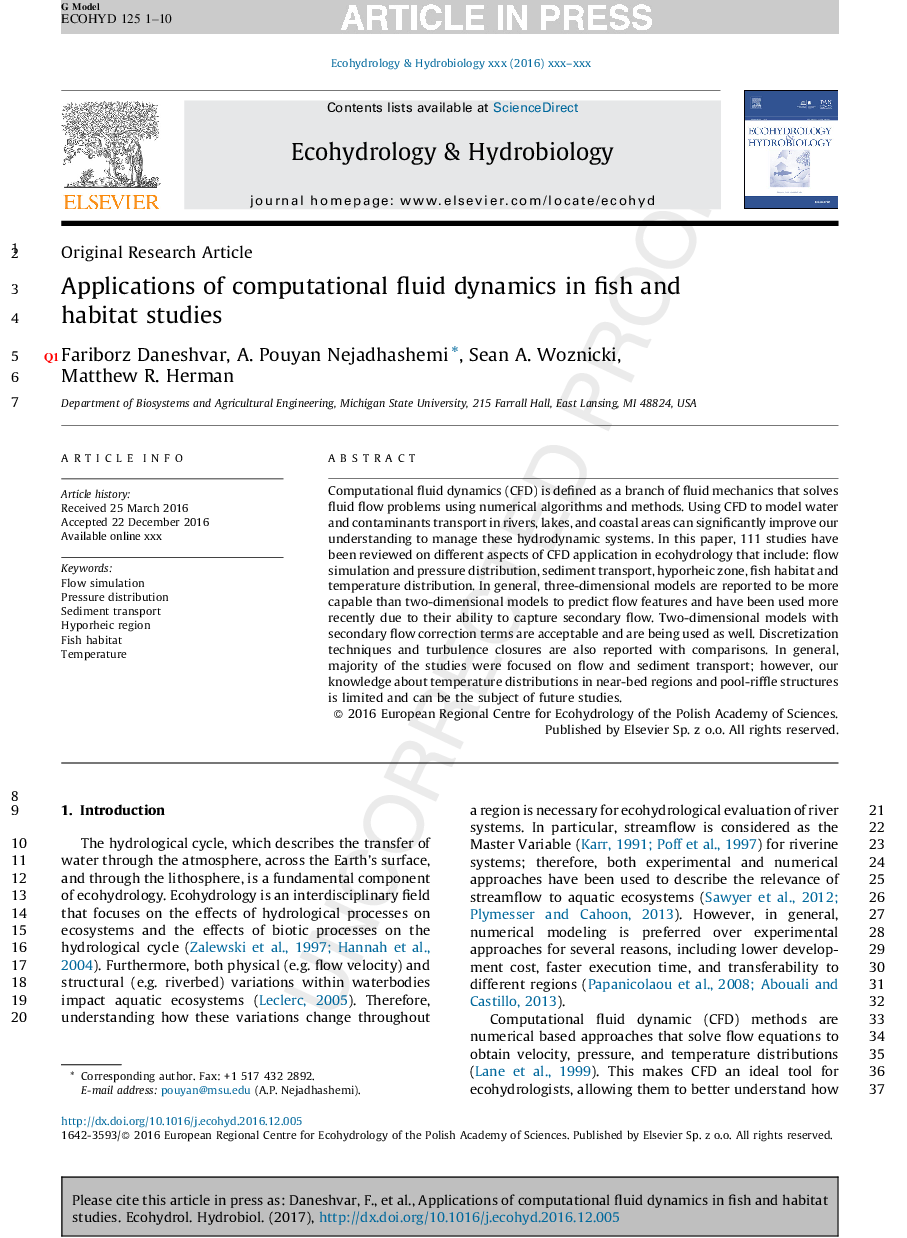| Article ID | Journal | Published Year | Pages | File Type |
|---|---|---|---|---|
| 5743477 | Ecohydrology & Hydrobiology | 2017 | 10 Pages |
Abstract
Computational fluid dynamics (CFD) is defined as a branch of fluid mechanics that solves fluid flow problems using numerical algorithms and methods. Using CFD to model water and contaminants transport in rivers, lakes, and coastal areas can significantly improve our understanding to manage these hydrodynamic systems. In this paper, 111 studies have been reviewed on different aspects of CFD application in ecohydrology that include: flow simulation and pressure distribution, sediment transport, hyporheic zone, fish habitat and temperature distribution. In general, three-dimensional models are reported to be more capable than two-dimensional models to predict flow features and have been used more recently due to their ability to capture secondary flow. Two-dimensional models with secondary flow correction terms are acceptable and are being used as well. Discretization techniques and turbulence closures are also reported with comparisons. In general, majority of the studies were focused on flow and sediment transport; however, our knowledge about temperature distributions in near-bed regions and pool-riffle structures is limited and can be the subject of future studies.
Related Topics
Life Sciences
Agricultural and Biological Sciences
Agricultural and Biological Sciences (General)
Authors
Fariborz Daneshvar, A. Pouyan Nejadhashemi, Sean A. Woznicki, Matthew R. Herman,
